Combat Anthropology: How the DPAA Gives Names Back to the Dead
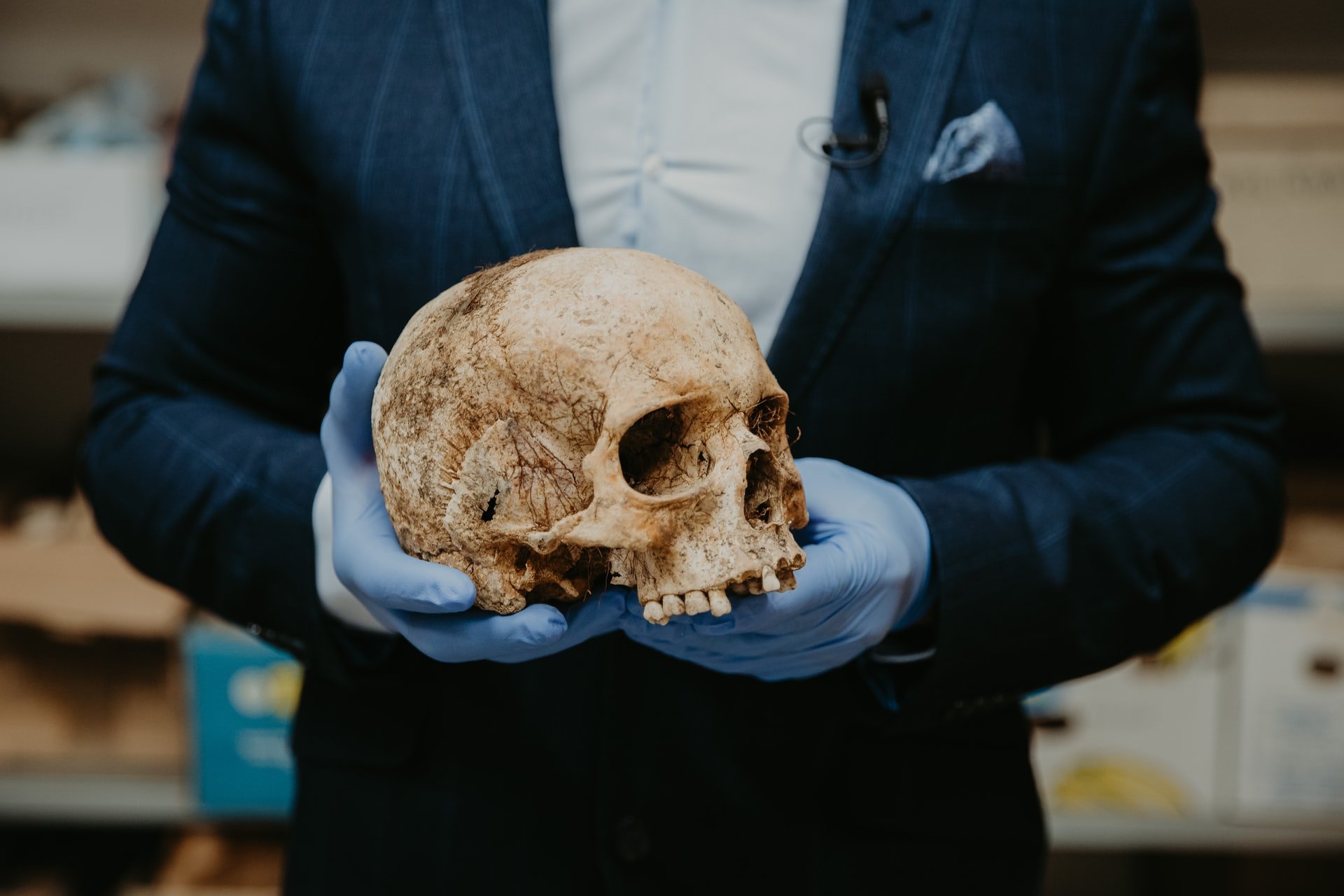
Human remains from a laboratory with archeological samples at the Department of Classical Archeology at Trnava University in Slovakia. Trnava University photo courtesy of Unsplash.
OFFUTT AIR FORCE BASE, Neb. —
In a World War II bomber hangar that once housed the Enola Gay and Bockscar B-29 bombers, which dropped the two atomic bombs on Japan, forensic anthropologist Traci Van Deest, Ph.D., and her team of scientists have several skeletons on display. These are the remains of American service members killed decades ago, far from home. Van Deest and her team of investigators’ goal is to give these Americans back their names.
The Defense POW/MIA Accounting Agency, or DPAA, works diligently at Offutt Air Force Base in Omaha, Nebraska, to identify the remains of missing service members. Dedicated investigators scour the world for the remains of missing American military personnel ranging from airmen who crashed in remote locations in Laos or Vietnam to sailors still entombed within the hulls of capsized warships in Pearl Harbor, Hawaii. Many of the remains never returned to the US homeland because they could not be positively identified in the immediate aftermath of combat or because they perished in locations previously difficult to reach — such as those sailors still inside the USS Arizona, which the Japanese sank during their attack on Pearl Harbor.
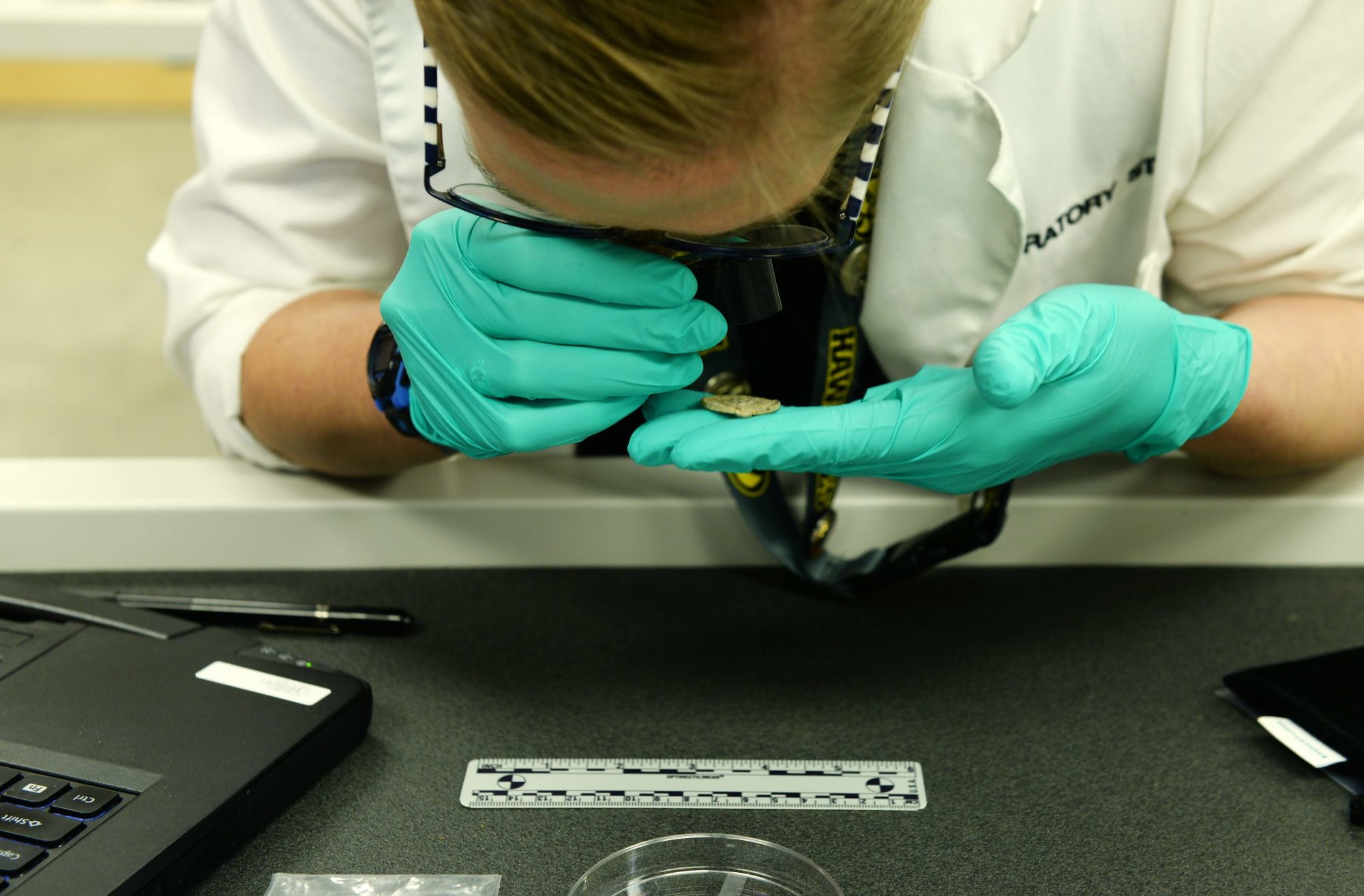
The DPAA’s laboratory at Offutt Air Force Base focuses on service members’ remains recovered in North America and the Mediterranean region. The agency maintains other detachments in Europe, Thailand, and Laos. There’s also a large laboratory at Joint Base Pearl Harbor-Hickham in Oahu, Hawaii, that focuses on the Asian and South Pacific regions. DPAA investigators have multiple ongoing projects in the Philippines, the Apennine Mountains of Northern Italy, and the forests of Germany and France.
The Offutt laboratory team has recently focused on identifying remains recovered from the USS Oklahoma, a project spearheaded by lead forensic anthropologist Carrie LeGarde, Ph.D. To date, the DPAA has identified some 86% of the previously unidentified remains that were still in the Nevada-class battleship after Japanese warplanes sank it during the Dec. 7, 1941, raid on Pearl Harbor. Initially, the military was able to identify only 35 of the 429 American sailors killed aboard the Oklahoma.
After moving the unidentified remains several times, the military finally buried them in 1950 in the National Memorial Cemetery of the Pacific in Honolulu, Hawaii — a location colloquially known as the “punchbowl” because of its location within a volcanic crater.
Following the advent of new forensic technologies in the decades that followed, several of the Oklahoma’s Gold Star families petitioned the Department of Defense to resume efforts to identify the dead. In 2003, the Defense Department finally authorized the DPAA to analyze a single casket of interred, unknown remains from the Oklahoma. The rest of the project hinged on the test results from that lone sample.
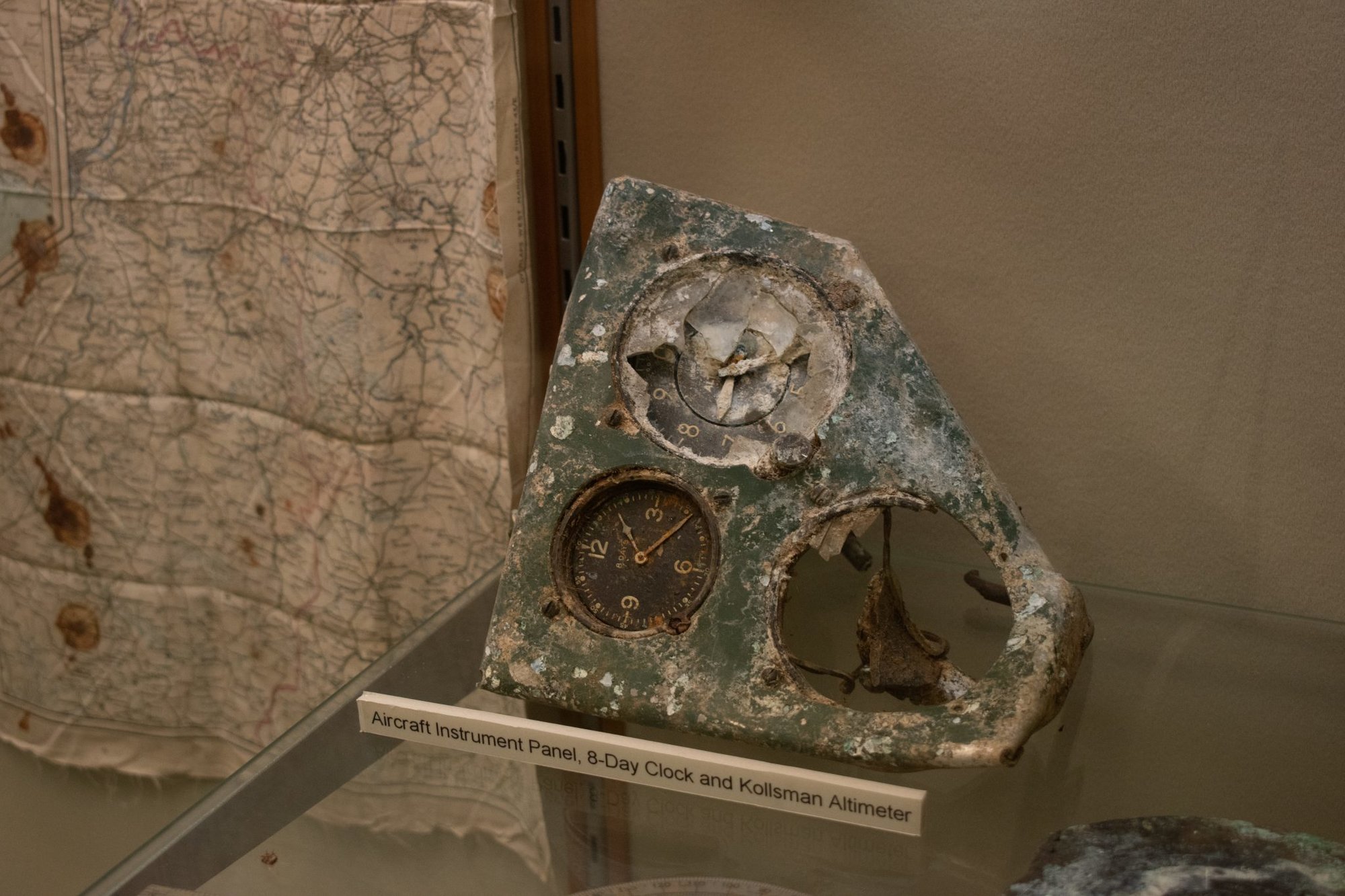
“It showed that a majority of the unaccounted for were still missing and buried in the punchbowl, all heavily commingled,” Van Deest told Coffee or Die Magazine in an interview, referring to the 2003 sample. The test results revealed that approximately a quarter of all the unidentified crewmen were represented in the remains contained within a single casket, thereby justifying the disinterment of all of the Oklahoma’s buried dead.
Initially, the DPAA estimated that it could identify some 80% of the Oklahoma’s personnel. Recently, however, the agency updated that number to 90%, according to a statement released in June.
In addition to the USS Oklahoma, the DPAA also oversees the 92nd Infantry Division Buffalo Soldier project. A segregated battalion comprising Black enlisted servicemen serving under white officers, the 92nd Infantry Division fought in World War II, most notably within the Italian Apennine Mountains. From 1944 to 1945, the combat unit pushed German soldiers northward against the Gothic Line.
“What made them unique was that they were [the] only African American infantry unit operating in Europe at that time,” according to a January DPAA release. Operation Fourth Term pushed the Germans’ last line of defense north, gaining more than 300 miles of ground. Despite their battlefield triumphs, the 92nd Infantry Division sustained heavy casualties, ultimately losing approximately 700 men, according to the DPAA. After the war, some 53 of the unit’s soldiers remained missing and unaccounted for.
To date, the DPAA has identified only three of the missing: Pvt. Penn Franks Jr., Pvt. Rudolph Johnson, and Pfc. Lonnie B.C. Eichelberger. The other 50 remain missing.
“This is primarily a disinterment project,” Sarah Barksdale, Ph.D., a DPAA European-Mediterranean Directorate historian, said in the January statement, referring to the 92nd Infantry Division Project.
Van Deest told Coffee or Die that there were still 50 individuals in the Florence American Cemetery in Italy. The DPAA needs to collect enough family reference samples to justify the disinterment of those graves. Every time a grave is disinterred, the exposed biological materials degrade substantially and rapidly in the open air, so anthropologists prefer to start the process only once all the required preparations are complete.
The DPAA is working on other investigations at locations across the world, including in the Philippines, the Solomon Islands, Papua New Guinea, Korea, and Pearl Harbor in Hawaii. Outside of these larger projects, the agency has also conducted several ad hoc individual recovery investigations over the years.
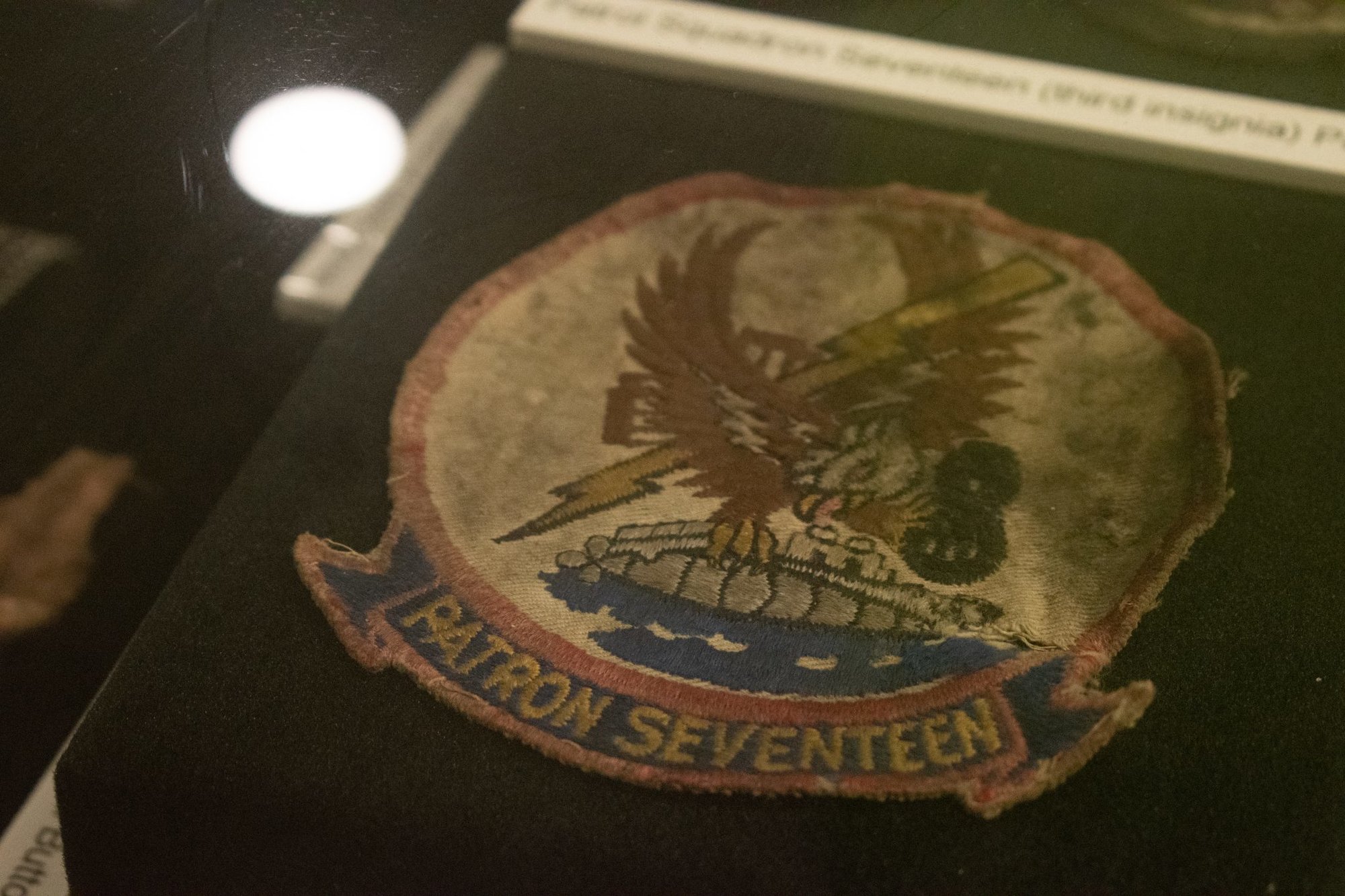
Identifying human remains is a complex process, often requiring thousands of hours of research in archives across the country.
First, for the DPAA to begin an investigation, suspected human remains must be identified as those of an American service member. This designation can be made in multiple ways, including, for example, the tail numbers from a crashed aircraft found along with the body, serial numbers from recovered weapons, ID tags, and archival operational records that indicate a US service member went missing in the surrounding area. Once the remains can be reasonably correlated with the US military, the DPAA launches archival work in the US and arranges with the host country to transport the service member to the US homeland for forensic analysis.
The second step is research. Barksdale, the DPAA European-Mediterranean Directorate historian, scours libraries, military records, and archives for newspapers and other documents pertaining to births, enlistments, wedding announcements, and missing person reports. That data is cross-referenced with DOD records and forensic evidence pulled from the remains.
Forensic examination of the bones — the third step in the process — provides a broad range of information, including evidence of disease, physical trauma, diet, sex, age, height, race, and weight. All those data points can be gleaned from the examination of skeletal remains. Stable isotope analysis of teeth can pinpoint where a person grew up, down to the region. Once a physical description is rendered — sometimes including facial reconstructions — investigators can synthesize that information with the archival data and other material evidence to render a well-informed identification hypothesis.

Once Offutt’s investigators receive the remains, anthropologists must clean and inventory the bones. “We lay them out in anatomical order, anatomical position, and assess what’s present,” Van Deest explained. “One of the first things that we really look for is not only what is present, but duplicate elements [also present].”
The possibility of duplicate elements — denoting remains from more than one individual — means anthropologists must be highly detailed in their work to avoid mixing remains.
Artifacts help with the fourth step in identification; materials from the survival gear issued to a pilot or a peron’s personal effects can also point to their names. “Sometimes we find service numbers written on their boots,” Van Deest said.
Some materials and artifacts preserve better in specific environments. For example, clothing will degrade faster if the remains are wet — such as in a jungle environment with constant rain.
Once the DPAA’s experts form an identification hypothesis, the final step is to send samples for DNA testing. To do this, the investigating anthropologist cuts a small notch out of a long bone — a bone from the arm or leg — and sends the extracted material to Tim McMahon, Ph.D., the director of DNA Operations for the Armed Forces Medical Examiner Service in Dover, Delaware. For his part, McMahon compares the DNA to a sample on file from a blood relative of the suspected service member who was previously identified through the archival research process.
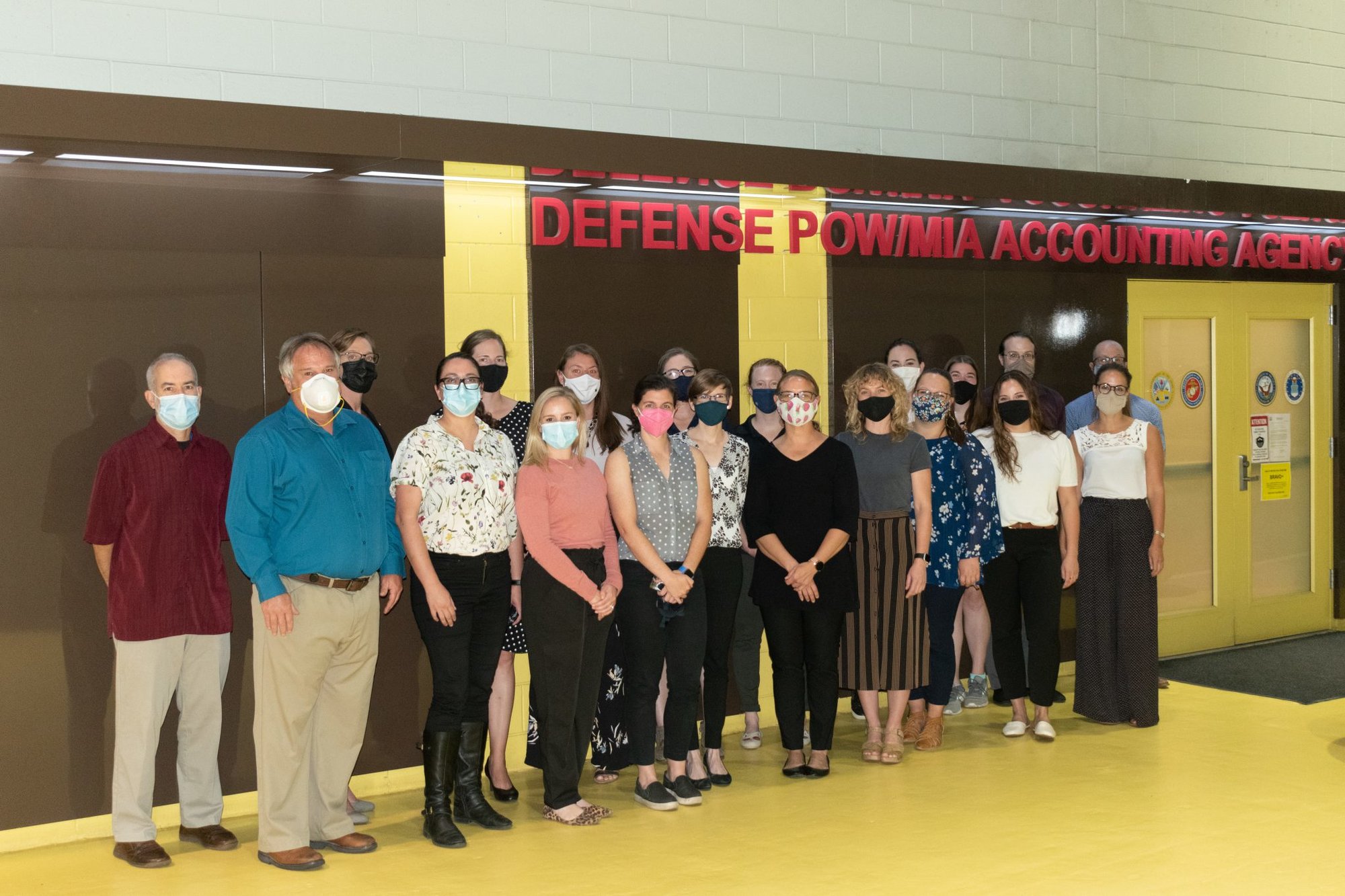
The DPAA is constantly in need of more family reference samples. According to Van Deest, a lack of DNA samples has hampered the 92nd Infantry Division investigation. The DPAA’s January statement reads, “Even when families are found, there can sometimes be a distrust of what the government is going to do with the DNA given because of past issues. However, there are now laws in place to prevent any kind of misconduct, and [the Armed Forces Medical Examiner System] can only use DNA for the purpose intended by the donor.”
The Armed Forces Medical Examiner System lab is the only facility that conducts DNA testing for the DPAA.
“We have a partnership with Brigham Young University [in Provo, Utah,] to provide limited, targeted genealogical services,” Sgt. 1st Class Sean Everette, the DPAA public affairs noncommissioned officer in charge, told Coffee or Die in an email.
“We also have a public-private partnership (i.e., no funding) with Ancestry.com (the genealogy, not the DNA side) through which Ancestry links information about our list(s) of the missing on their website,” Everette added. “This alerts genealogists using Ancestry.com that someone they are interested in may also be of interest to us and facilitates overall public awareness.”
Read Next:

Lauren Coontz is a former staff writer for Coffee or Die Magazine. Beaches are preferred, but Lauren calls the Rocky Mountains of Utah home. You can usually find her in an art museum, at an archaeology site, or checking out local nightlife like drag shows and cocktail bars (gin is key). A student of history, Lauren is an Army veteran who worked all over the world and loves to travel to see the old stuff the history books only give a sentence to. She likes medium roast coffee and sometimes, like a sinner, adds sweet cream to it.
BRCC and Bad Moon Print Press team up for an exclusive, limited-edition T-shirt design!
BRCC partners with Team Room Design for an exclusive T-shirt release!
Thirty Seconds Out has partnered with BRCC for an exclusive shirt design invoking the God of Winter.
Lucas O'Hara of Grizzly Forge has teamed up with BRCC for a badass, exclusive Shirt Club T-shirt design featuring his most popular knife and tiomahawk.
Coffee or Die sits down with one of the graphic designers behind Black Rifle Coffee's signature look and vibe.
Biden will award the Medal of Honor to a Vietnam War Army helicopter pilot who risked his life to save a reconnaissance team from almost certain death.
Ever wonder how much Jack Mandaville would f*ck sh*t up if he went back in time? The American Revolution didn't even see him coming.
A nearly 200-year-old West Point time capsule that at first appeared to yield little more than dust contains hidden treasure, the US Military Academy said.












